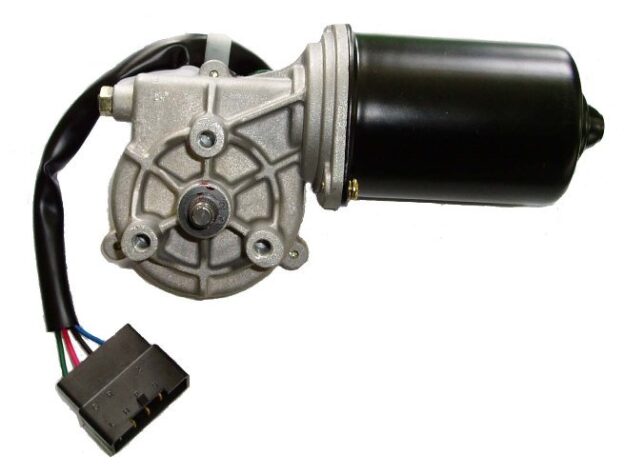The major change, that KAE has observed between the modern cars and the cars we had in our retro years, is the change in many automotive spare parts. This change also includes the change in the wiper motor. Previously, the wiper motors could only allow a single speed for the wipers to move on the windshield. The current wiper motor allows the wiper to have dual-speed, along with the stagnant or idle option.
The wiper that our modern car has uses two automation to perform its task:
- Provide power to the wipers by combining worm gear reduction and electric motor
- To govern the back-and-forth movement of the wipers, a neat linkage is made to convert the rotational output into motion.
Electric Motor and Gear Reduction
For the back-and-forth movement to happen, the wiper requires tremendous force. The force actually allows the force to move wipers across quickly, on the windshield. To generate such a force, a worm gear is used. It is placed on the small electric motor’s output.
The worm gear reduction helps to increase the efficiency of the torque of the wiping motor, almost 50 times more. But this will slow the output speed of the motor by 50 times as well. The output of the worm gear reduction handles the linkage that assists the movement.
An electric circuit present inside the motor assembly can sense the wiper blades when they are in off or down mode. The circuit helps to maintain the power, till the time you actually shut your wipers off, and the wipers are stationed at the idle position, in the bottom. This is possible as, after the use, the circuit cuts the power to the motor. It is also responsible for parking the wiper between the wipes when working on an intermittent setting.
Neat Linkage
The neat linkage helps to transmit and generate power to the wiper blade of the passenger side. The smooth working of the linkage will help you understand more about it.
Firstly, a short cam is attached to the gear reduction’s output shaft. As the wiper motor turns, so does the short cam. The short cam is also linked with a long rod. So the spinning of the cam helps in the movement of the rod in a back-and-forth motion. The short rod motivates the wiper blade off the driver’s side, thus enabling both blades to move together. Another long rod then moves the wiper blade on the passenger side. But in the end, everything falls down to the wiper motor and the circuit.
Why Choose Lucas TVS’s Wiper Motor?
Lucas TVS’ Wiper motor includes:
Features:
Front Wiper Motors-12V & 24V
- Motor Torque Range of 13 to 120 Nm
- Wipe Angle Range of 70 to 110 degrees
- Overload protection
- EMI/EMC to CISPR25
- High corrosion resistance
- Life: 1.5/3 Million Cycles as per SAEJ903C & J198
Wipe Pattern
- Tandem
- Extended
- Opposed Wipe pattern
Types Of Wiping Linkages
- Discrete type wiping linkage -suitable for 2 or 3 Arms
- Linkages for opposed wipe patterns
- Integral Type Built-in mounting frame
- Motor Torque Range of 7Nm
- The angle of the Wipe between 90 to 165 degrees
- Rear Wiper Motors
- EMI/EMC to CISPR25
- Life: 0.5 million cycles
Choose From KAE- The Premium Lucas TVS Supplier
Krishna Auto Electric is a prominent name among the distributors of premium quality automobile or automotive spare parts. We offer a plethora of products from LUCAS TVS which are the most widely used automobile spare parts in the several brands for cars. Check out our range of Lucas TVS automotive spare parts and contact us now for an instant quote!

